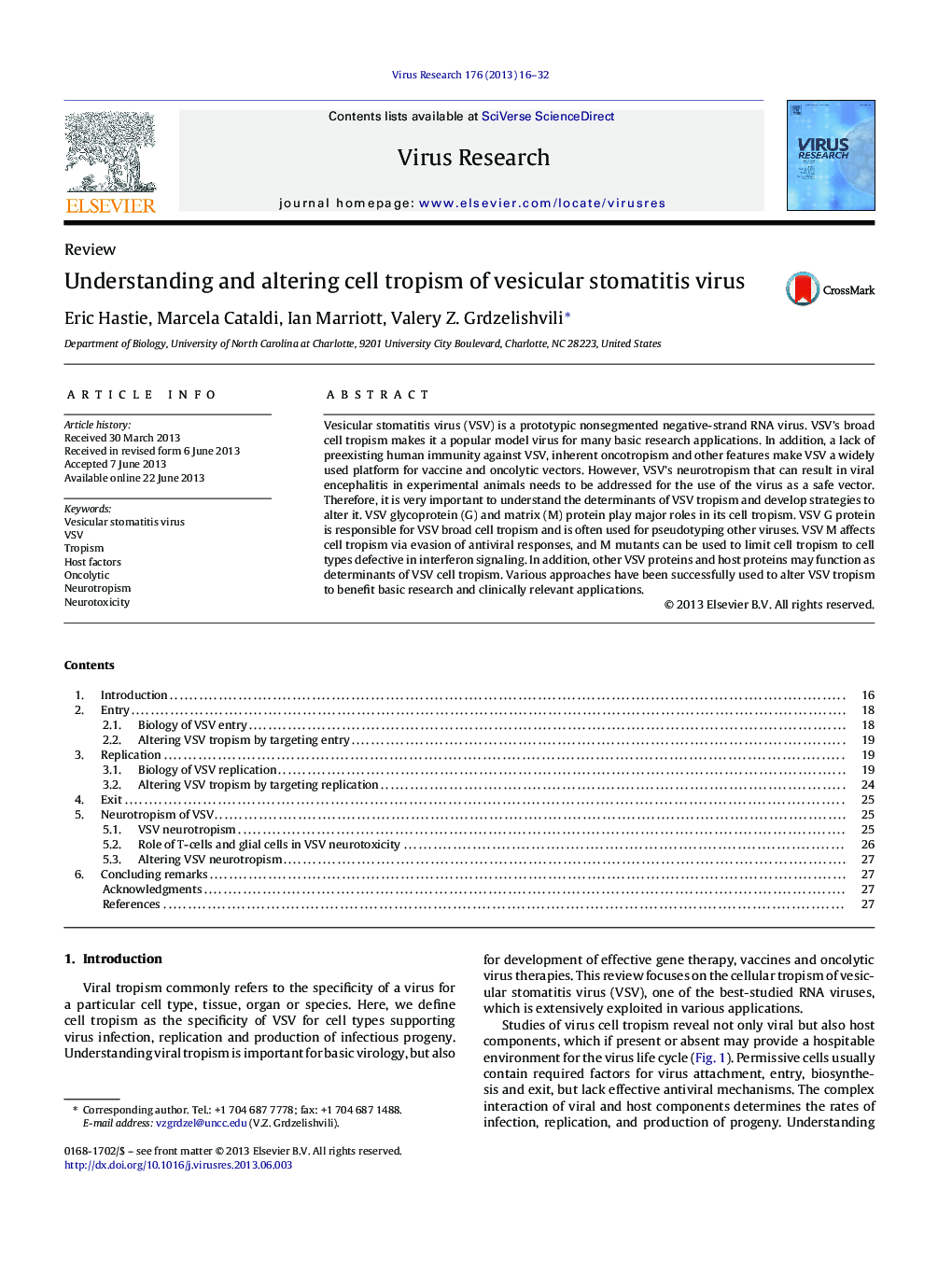| کد مقاله | کد نشریه | سال انتشار | مقاله انگلیسی | نسخه تمام متن |
|---|---|---|---|---|
| 6142946 | 1594379 | 2013 | 17 صفحه PDF | دانلود رایگان |

Vesicular stomatitis virus (VSV) is a prototypic nonsegmented negative-strand RNA virus. VSV's broad cell tropism makes it a popular model virus for many basic research applications. In addition, a lack of preexisting human immunity against VSV, inherent oncotropism and other features make VSV a widely used platform for vaccine and oncolytic vectors. However, VSV's neurotropism that can result in viral encephalitis in experimental animals needs to be addressed for the use of the virus as a safe vector. Therefore, it is very important to understand the determinants of VSV tropism and develop strategies to alter it. VSV glycoprotein (G) and matrix (M) protein play major roles in its cell tropism. VSV G protein is responsible for VSV broad cell tropism and is often used for pseudotyping other viruses. VSV M affects cell tropism via evasion of antiviral responses, and M mutants can be used to limit cell tropism to cell types defective in interferon signaling. In addition, other VSV proteins and host proteins may function as determinants of VSV cell tropism. Various approaches have been successfully used to alter VSV tropism to benefit basic research and clinically relevant applications.
Journal: Virus Research - Volume 176, Issues 1â2, September 2013, Pages 16-32